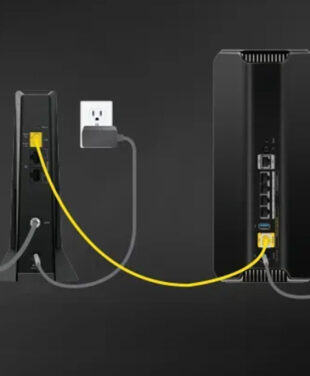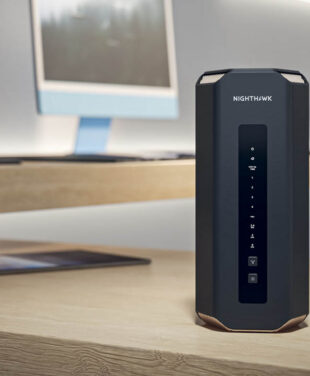At a Glance
From breaking down what MU-MIMO is to showing how it keeps streaming, gaming, and video calls running smoothly, this guide explains the tech in simple terms—and highlights how the latest Orbi Mesh Systems and Nighthawk WiFi 7 Routers bring it to life across your home.
IN THIS ARTICLE
What is MU-MIMO?
MU-MIMO stands for Multi-User, Multiple-Input, Multiple-Output, a technology introduced with WiFi 5 (802.11ac) that allows a router to communicate with multiple devices simultaneously. Multi-user MIMO represents a significant advance over single-user MIMO (SU-MIMO), generally referred to as MIMO. MIMO technology was created to increase the number of simultaneous users a single r WiFi router or access point can support.
This aim was initially achieved by increasing the number of antennas on wireless routers. Router technology builds on previous standards, with MU-MIMO technology supporting concurrent users accessing WiFi 6, WiFi 6E, and superfast WiFi 7 networks for both uplink and downlink wireless communications.
How Do SU-MIMO and MU-MIMO Work?
How Traditional Single-User MIMO (SU-MIMO) Works
In SU-MIMO, the router focuses all of its antenna “spatial streams” on one device at a time. It will then send a burst of data to the laptop, then pivot to the phone, then on to the smart TV. That stop-and-go sequencing is simple but adds latency whenever several gadgets compete for airtime.
- All spatial streams target a single client during each transmission cycle.
- Beam-forming locks the signal onto that client to maximize speed and reliability.
- Other devices wait their turn, so busy networks can feel sluggish compared with MU-MIMO.
How Multi-User MIMO (MU-MIMO) Works
With MU-MIMO, the router splits its antenna array into separate “lanes,” letting several devices receive data at the same time instead of queuing up for their turn.
- Spatial streams are divided among multiple clients for true simultaneous transfers.
- Bandwidth is allocated on the fly, so each device gets the speed it needs without slowing others.
- Dedicated beamforming steers every stream toward its target, boosting overall capacity and throughput.
Benefits of MU-MIMO vs SU-MIMO for Home WiFi Users
There was a time not long ago when homes in the US had only a few connected WiFi devices. SU-MIMO could handle the load by servicing the first request while additional connections wait their turn. Times have changed and now the average US household has dozens of wireless devices like laptops, iPads, smartphones, and smart home IoT applications. The solution is MU-MIMO technology that allows multiple users to access router functions on spatial streams without the congestion.
Benefits of MU-MIMO for multiple devices include:
Reduced Buffering and Lag – MU-MIMO minimizes buffering during streaming and reduces lag in online gaming by providing a more stable connection.
Improved Network Efficiency – MU-MIMO increases overall network capacity and the number of streams available, allowing more devices to connect without compromising performance.
Enhanced User Experience – MU-MIMO facilitates smoother streaming, faster downloads, and more responsive WiFi efficiency for internet browsing.
Do You Need MU-MIMO?
Today’s WiFi routers are far more powerful than those supporting earlier WiFi standards. NETGEAR WiFi 7 routers with MU-MIMO and whole-home mesh systems are state-of-the-art, with real-world speeds up to 27 Gbps, coverage up to 10,000 sq. ft. and connectivity for 200+ devices. MU-MIMO is essential for most home internet users and advanced applications for streaming, gaming, and networking. But first you should:
- Assess Your Network Needs – Determine if your current number of devices and internet usage patterns would benefit from MU-MIMO technology.
- Consider Compatibility – Both the router and WiFi network connected devices need to support MU-MIMO to fully utilize its benefits for simultaneous data streaming.
- Check your ISP and Modem Data Rates – You may need to upgrade your ISPs plan and your modem – a slow ISP plan will hold back even the fastest routers and mesh systems! The Nighthawk CM3000 Modem help you get the best from WiFi 7 routers.
How to Upgrade to MU-MIMO Enabled Routers
WiFi 7 and MU-MIMO technology sync perfectly with the latest virtual reality, augmented reality, AI applications, and streaming and gaming with millisecond response times. This is where the amazing NETGEAR router range stands tall, with powerful WiFi 7 routers with MU-MIMO for every price point.

Setting Up MU-MIMO
NETGEAR routers and WiFi mesh systems can be adapted to suit your needs. Note that on the latest NETGEAR Devices MU-MIMO is enabled by default. To setup or check on MU-MIMO enhancement is easy in a few simple steps.
MU-MIMO Setup: App Method
- 1. Launch the Nighthawk or Orbi App
- 2. Enter your Username and Password
- 3. Open the Advanced User Interface
- 4. Enable MU-MIMO and Save settings
MU-MIMO Setup: Web Interface Method
- 1. Launch a web browser from a device that is connected to your router’s network.
- 2. Enter www.routerlogin.net. A login screen displays.
- 3. Enter the router user name and password. The BASIC Home page or Dashboard displays.
- 4. Select ADVANCED > Advanced Setup > Wireless Settings.
- 5. Clear the Enable MU-MIMO check box to disable MU-MIMO or select the checkbox to enable MU-MIMO.
MU-MIMO Conclusion
Understanding MU-MIMO technology in routers is straightforward. MU-MIMO reduces latency and improves performance during data-intense activities such as multi-player gaming and streaming 4K/8K video. With MU-MIMO, the broadcast device never interrupts its connection to the client to communicate with other client devices. MU-MIMO minimizes jittery video, freezes, and buffering, while also reducing network congestion and improving download speeds.
FAQs
How does MU-MIMO improve WiFi speed?
While MU-MIMO doesn’t increase the internet speed provided by your ISP, it optimizes the internal network, allowing devices to receive data more efficiently, which can result in a perceived speed improvement.
Is MU-MIMO beneficial for small households?
Yes, even in small households, MU-MIMO can enhance WiFi performance, especially if multiple devices are used simultaneously for activities like streaming or gaming.
Do all devices support MU-MIMO?
No, both the router and the client devices must support MU-MIMO to take full advantage of the router technology.
How do I know if my router has MU-MIMO?
Check your router’s specifications on the manufacturer’s website or user manual to see if MU-MIMO is listed as a feature.




